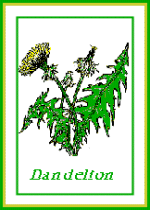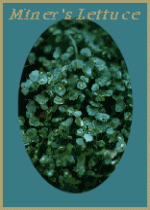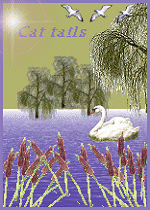Apply your focus
& intent to create
optimal wellness
& health.
• Sitemap
• Articles
• Headlines
• Coaching
• Shoppe
• Resources
• Trophies
• Win Awards
• Dialogue
• Courses
• Subscribe
• About Us
• Disclaimer
• Privacy
• Art Meditation
• Contact Us
• Main
|
Nutrition from the Wilds by June Kaminski, MSN
 Gathering new Spring plants has been a human tradition since time began. In modern times, it is a ritual that few have experienced. It is so much "easier" to go to the store, but what experiences are lost. Get in touch with what nature offers you and your family freely - and packed with nutrition! Gathering new Spring plants has been a human tradition since time began. In modern times, it is a ritual that few have experienced. It is so much "easier" to go to the store, but what experiences are lost. Get in touch with what nature offers you and your family freely - and packed with nutrition!
Some Plants to Try This Spring Dandelion
Everyone knows the humble Dandelion. For centuries they have been eaten with gusto in European countries, and loathed as lawn weeds in North America. The fresh young leaves are delicious, and can be eaten raw in salad or on sandwiches. Make sure you pick them from an unsprayed area, though, preferably away from roads and car fumes. Older leaves become increasingly bitter, but can be used like any "cooking green" --steamed or simmered. The crown of the plant can be eaten as a hot, cooked vegetable, alone, or with other vegetables.
 Miner's Lettuce
This lovely little plant grows naturally in cool mountain regions. This Spring plant can be gathered for delicious salads, or as a green addition to sandwiches. Very tender and full of life!
Prickly Pear
A desert plant, the Prickly Pear has proven beneficial to diabetics and is delicious (once the spines are removed). Both pads and the fruit are edible. Sautee the despined pads in olive oil and add garlic, tomato, onions, and so on to make a main dish. This  plant is versatile and can be added to many dishes: casseroles, breads, even desserts. plant is versatile and can be added to many dishes: casseroles, breads, even desserts.
Cat tails
Cat tails are one of the most versatile plants native to North America. Long thought of as a mainstay by indigenious people, cat tails have been used for food, for diapers, for wound care, toys, decoration, and weaving materials. In the spring, the new shoots make a great vegetable addition. Just pick some shoots in each patch, don't pick the whole plant. Cat tails can be harvested at each stage of their growth, right up to autumn when they display their lovely cottony seeds.
Precautions before you go Picking
- Buy a plant identification book with clear pictures
 - Don't pick any plants unless you are positive you know it
- At first, just taste a small amount. You'll be able to identify any new food allergies easier, without problems.
- Pick conservatively. Never pick more than you can use.
- Do not pick endangered or threatened species.
- Wash and cook plants carefully.
- Avoid sprayed areas. Or picking along roadsides.
More Links To Explore! Dining on the Wilds
offers some thoughtful reasons why edible food gathering is healthy, smart, and soul-stirring all at the same time. Interesting features, tips, wild plant nutrition table, as well as videos to purchase to learn definitive plant identification.
Learn more about the uses of Cat tails for food and other things at NativeTech an amazing site, full of information on Native wisdom and knowledge.
A thoughtful article by Howie Brounstein on Wild Crafting offers guidance for planning your Spring plant gathering.
Botanical.com offers the full text version of Mrs. M. Grieve's A Modern Herbal. A classic herbal reference, a complete description of countless herbs and wild plants are offered.
Site is optimized for all browsers - for screen resolution 800x600 - for 16 bit or better color.
© June Kaminski, MSN - 2001 - 2005 -Healing Intent.com - All rights reserved.
Design by June Kaminski, Visions of Adonai Design
|
|

